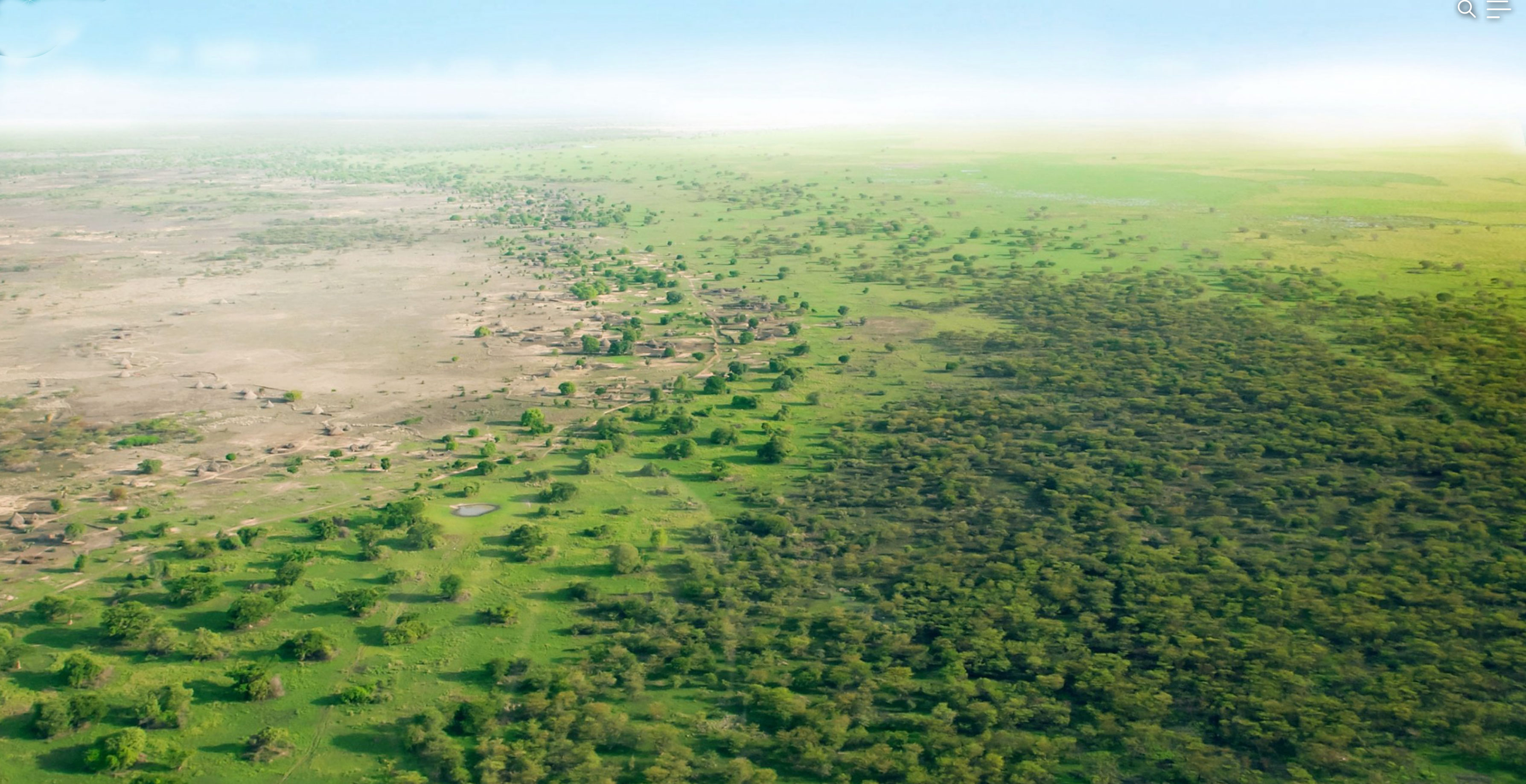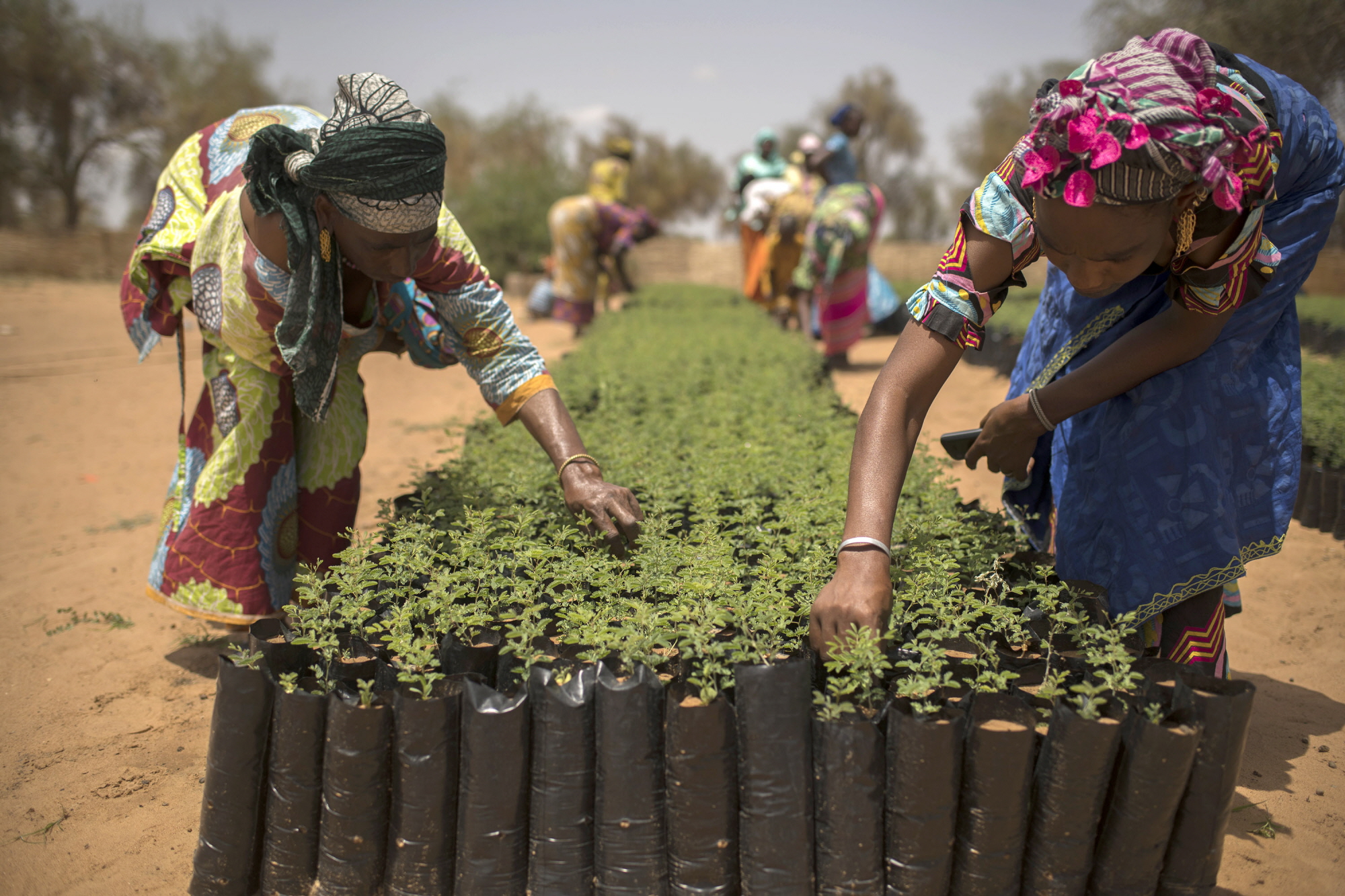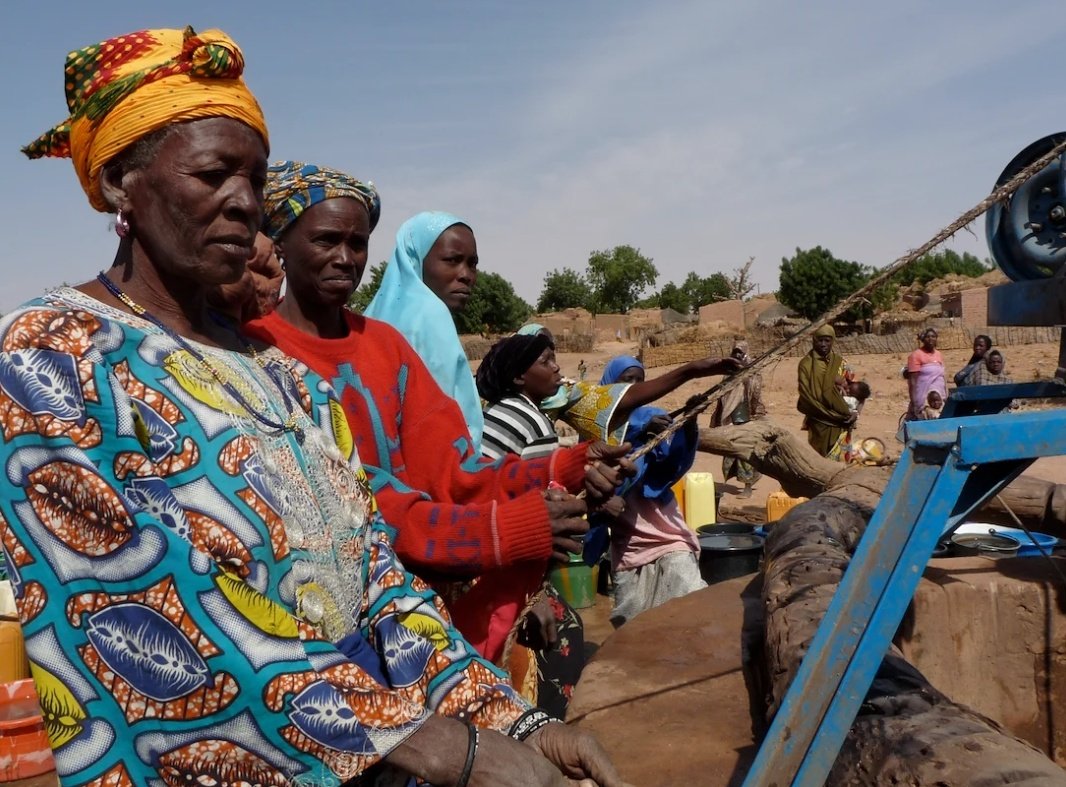Great Green Wall Homegrown Solutions to Accelerate Climate Action and Development
January 23, 2023

Arial view of the Great Green Wall.
Climate change is the biggest challenge of our time. Amongst most affected areas in the world, the Sahel is one of particular importance due to the complexity of challenges it faces and the wide repercussions of its rampant desertification. This phenomenon, caused by a combination of factors such as climate change, overgrazing, and poor land management practices, threatens the livelihoods of millions of people and risks sparking further violence throughout and beyond the vast swaths of its sand.
This specific issue was one of the critical focuses of the 2022 African Economic Conference in Mauritius last December, which gathered government officials, economists, climate activists and development actors to support “Climate-Smart Development in Africa”. And one key solution was at the heart of conversations during the Conference: the Great Green Wall Initiative (GGWI), which was highlighted during a UNDP special event.
Much more than planting trees
Much more than tree planting, the Great Green Wall transforms millions of lives in the Sahel. Initially targeting 11 Sahelian nations, the campaign was built to halt the progress of the Sahara desert, which has spread by 10 percent since 1920 and engulfed entire villages. Today, it is widely recognized that tree-planting alone will not bring transformation in the Sahel and the Great Green Wall is before all a unique forward-looking natural resources governance solution driven by local communities themselves.
In Niger, for example, young people have played a key role in raising awareness, mobilising and building capacity to contribute to the GGWI, notably through the Sahelian Youth for Climate Action (JESAC) project. They have planted trees across 97 ha of restored land, and trained communities in agroforestry techniques. Nurseries and payments of ecosystem services allowed to generate income for local populations. In addition, in collaboration with the Nigerien government, young people were conducting a mapping of the sites to assess the potential for carbon credits to be reinvested in the communities in the future.
A community-driven initiative
By putting local communities in the driver's seat of the initiative, the GGWI is able to ensure that the project is tailored to the specific needs of the region. This approach has already led to the successful completion of 18% of the Great Green Wall, the restoration of over 20 million hectares of land, the creation of 350,000 jobs, the training of 10 million people in sustainable land and water management practices, and $90 million generated by project activities. This is a significant achievement, but there is still much work to be done to accelerate progress and promote the initiative's successes.

Senegalese villagers working in a tree nursery forming part of the Great Green Wall.
"We need to empower young people to take leadership roles in the GGWI and ensure that their voices are heard in the decision-making process."Bachir Moumouni, Jeunesse Sahélienne pour l'Action Climat
The special event in Mauritius was the occasion for a high-level panel to review the challenges and opportunities of the GGWI. The President of the COP15 on Desertification and former Minister of Water and Forests of Côte d'Ivoire, Richard Alain Donwahi, highlighted the importance of involving local communities in the initiative. He emphasized that "National governments and communities should be in the driver seat of the GGWI". The young project manager of JESAC (Sahelian Youth for Climate Action) for the Great Green Wall in Niger, Bachir Moumouni, also stressed the importance of involving young people in the initiative. He said, "We need to empower young people to take leadership roles in the GGWI and ensure that their voices are heard in the decision-making process."
Central to national development agendas and budgets
Mobilizing resources is among the most pressing challenges to enable the scale up of the initiative and its even greater transformative change. National governments prioritizing the integration of the GGWI into national development strategies and budgets is a critical step for the initiative to expand and grow. The Ag. Director of the Climate Change and Green Growth Department of the African Development Bank Group, Dr Al-Hamndou Dorsouma, stated that "GGWI must be placed at the center of national development agenda and budgets to realize the Sahel promise." According to the progress report on the GGWI produced by the United Nations Convention to Combat Desertification (UNCCD) and the African Union's Pan-African Agency (APGMV), to reach the agreed target by 2030, it is necessary to restore 8.2 million hectares of land each year, which is equivalent to an average of 4 billion dollars per year.

Women pulling water out of a well in Niger.
Strengthening coordination and pooling efforts around a common fund
The international community and regional partners have a role to play in improving the coordination of efforts, fostering new partnerships and galvanising resource mobilisation to scale up the implementation of the initiative. One of the challenges is to define an effective coordination strategy between the different GGW bodies based in Nouakchott, Bonn, and Addis Ababa and between regional organisations such as ECOWAS, ECCAS, the Lake Chad Basin Commission, the Mano River Union.
It is also essential to help put in place innovative financing and implementation solutions involving all actors, under the leadership of the States. One of the possible solutions lies in the creation of an African financing platform (basket fund) to facilitate coordination, accelerate, and intensify implementation and ultimately support the efforts of states to integrate GGW projects into their national development plans.
Promoting the wide-ranging regeneration
The Great Green Wall Initiative is an ambitious and important project that has the potential to transform the Sahel region, sparking A Regeneration as outlined in UNDP’s Offer for the Sahel. Increased advocacy and communication on the tangible results of the initiative will also be critical. The Programmes Director of the Office of the United Nations Special Coordinator for the Sahel, Nwanne Vwede-Obahor, said "We need to communicate the successes of the GGWI and show the tangible benefits it brings to communities in the Sahel." Beyond tree planting, land restoration, and carbon sequestration, the GGWI has generated employment and income for communities, thereby advancing peace, development, and stability throughout the Sahel region.
Thereby, UNDP and partners will support acceleration and scaling-up of ongoing initiatives to advance sustainable and resilient development across the Sahel region and beyond. The Great Green Wall Initiative catalyzes opportunities for creating a green, prosperous and resilient Sahel and its scale up will benefit communities far beyond the subregion.
***
The GGW impacts all the Sustainable Development Goals as Africa's largest sustainable development initiative. In a context where the African continent has massive carbon storage potential, the realisation of the Great Green Wall could influence climate trends and have a lasting impact on the continent's development trajectory.
UNDP is fully committed to supporting this initiative through the development of a regional project targeting seven Sahelian countries, as a direct contribution to the Global Initiative for Governance Development under the Integrated Multi-State Programme, as part of the cooperation between PAGGW and UNDP. Our regional project in the Sahel will help women and youth forge synergies between restored ecosystems and resilient livelihoods and promote sustainable use of natural resources as investments in Africa’s future.

 Locations
Locations



